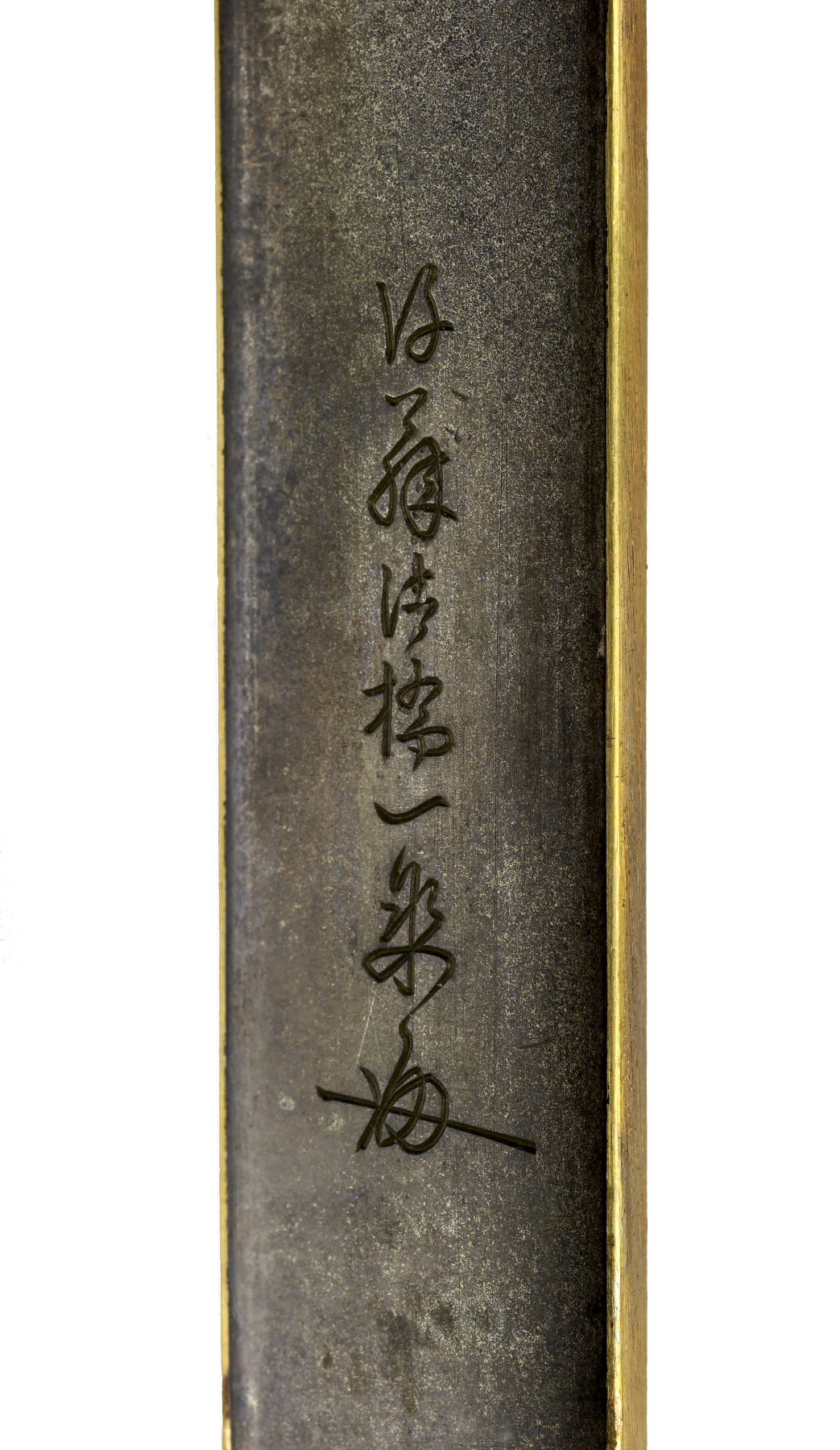Kozuka with Kanzan and Jittoku
(Japanese Military Armor)
Kanzan (Ch. Hanshan [Hanshan]) and Jittoku (Ch. Shide [Shih Te]) are a pair of Zen eccentrics who lived at a monastery on Mt. Tendai in China during the Tang [T'ang] period (618-907). They spoke to each other in a nonsense language that no one else understood. Kanzan is always shown holding a scroll, which he is explaining to Jittoku. Jittoku carries a broom because he worked cleaning the monastery kitchen. Kanzan stands in front with his scroll and Jittoku is behind holding a bucket. His broom lays on the ground.
Inscription
Provenance
Provenance (from the French provenir, 'to come from/forth') is the chronology of the ownership, custody, or location of a historical object. Learn more about provenance at the Walters.
Henry Walters, Baltimore [date and mode of acquisition unknown]; Walters Art Museum, 1931, by bequest.
Geographies
Japan, Tokyo (Edo)
(Place of Origin)
Japan, Kyoto (Place of Origin)
Measurements
3 7/8 in. (9.8 cm) (l.)
Credit Line
Acquired by Henry Walters
Location in Museum
Not on view
Accession Number
In libraries, galleries, museums, and archives, an accession number is a unique identifier assigned to each object in the collection.
In libraries, galleries, museums, and archives, an accession number is a unique identifier assigned to each object in the collection.
51.686






